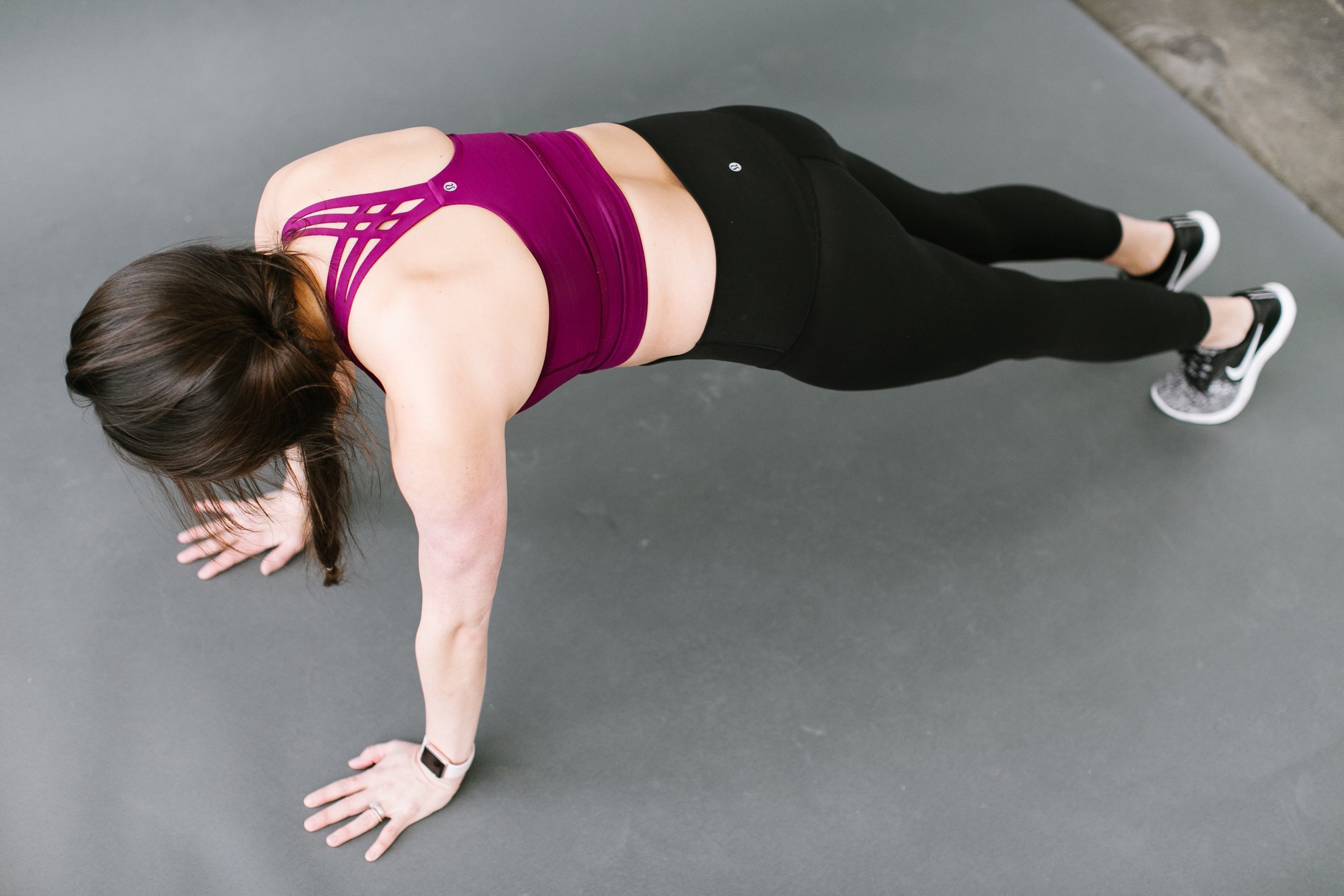Carpal Tunnel Syndrome
Carpal Tunnel Syndrome (CTS) is when there is compression on the median nerve. This compression causes numbness, tingling, and pain and is often more annoying than painful. Carpal Tunnel often causes these issues in the thumb, index, middle finger, and half of the ring finger. Unfortunately, this is quite common during pregnancy. Statistics show that 43% of expecting women have experienced symptoms of CTS. Pregnant women are susceptible to these symptoms because of the increase in fluid along with poor postural changes during pregnancy. Fortunately, it is likely that shortly after giving birth, the extra fluid will decrease and the symptoms will dissolve.
One of the things that doesn’t seem to “fix” itself after pregnancy is posture. Strength training within our workout program does offer postural corrections for the common pregnancy posture changes. You can get the app here. The exercises in the program help specifically target carpal tunnel syndrome and its symptoms. Carpal Tunnel Syndrome often times rears its ugly head later in the pregnancy journey. It can leave a mama to be with an annoying little sensation and pain.
One of the most important facts about nerves is that they do NOT like to be snug, crushed, or compressed. The best ways to give your nerves space would be to avoid repetitive stresses, improve gliding of nerves, and reduce mechanical compression/splinting. If you experienced CTS in a previous pregnancy, you likely will have a heightened awareness to the problem and are more likely to experience it again in subsequent pregnancies.
Avoiding Repetitive Stress:
Avoidance is key. The activities that often times make CTS worse include,
1. Back and forth motions of the hand (typing, sewing, playing on phone/tablet).
2. Placing pressure on the heel of your palm (pushups).
3. Forceful grasping (garden clippers, holding dumbbells).
4. Vibrations (power tools).
Breaks:
Taking breaks (especially if you sit at work) will be beneficial on both your mind and body. When you stand up to take a break you’ll want to pump your fists and elevate your arms above your head. This will help avoid the pooling of fluid into the upper extremities. Stretching your pectoral muscles will also allow your body to open up the pathway for that nerve.
Restful Zzz’s:
Sleeping during pregnancy can be the opposite of restful and refreshing. Changes in hormones and our bodies make sleeping suboptimal and this is especially true with CTS. A typical sleeping position will involve the wrist being flexed while we sleep. Doing so will only increase the amount of pressure being put on that nerve. A way to prevent this is, lying on your side with a pillow under the side of your body. Try to keep your arms down and not above your head.
If you’re attempting to change your sleeping position and not finding relief, don't fret. The best way to help your symptoms is by splinting. Click HERE for a brace that will help decrease numbness during sleep which will help make your days more pleasant. Often the wrist splint only needs to be worn at night. Being proactive about helping the nerve will only relax it. Ignoring this nerve will only make your symptoms more painful and more annoying.
Working Out:
Earlier we mentioned that avoiding pushups is likely what you should do, as it puts pressure on that nerve. So instead of doing a normal pushup, try holding dumbbells while keeping your wrist(s) neutral with a loose grip. As far as using dumbbells during your workout, if they aren’t causing your discomfort or an increase in numbness, continue to use them. If you are experiencing an increase in symptoms, try loosening your grip or decreasing the weights.
Sometimes pushing through the pain is NOT a smart decision. You might have to say so long to pushups for a while.
Exercises & Stretches:
Nerves are passive tissue that glide through and around other structures such as muscles, bones, etc. Improving the gliding of nerves is key for healthy nerves. Below we’ve included some nerve glide stretches.
Another piece to the puzzle is correcting poor posture, this will help assist in reducing the mechanical compression placed on the nerve. During pregnancy, it is easy to compress the nerve because our head juts forward and our shoulders are rounded. This posture will squeeze that nerve and it passes underneath the collarbone. There are tons of exercises in our guide to prevent CTS. Ultimately, having a flexible neck, strong back, relaxed pecs, and flexible forearms will help you avoid CTS.
Try these exercises if you’re struggling with cts:
Median nerve glide (unloaded and loaded)
Thoracic rotation (head supported)
1st rib mobilization
Pec stretch
Median nerve glide unloaded
Median nerve glide loaded
Thoracic rotation
1st rib mobilization
Pec stretch
We're excited to offer you guys another freebie! Fill out this form to receive a freebie with even more exercises that will help CTS!
Hope this helps some mamas-to-be!
Krystle Howald, DPT
Reference
Padua L , Aprile I, Caliandro P, et al. Symptoms and neurophysiciological picture of carpal tunnel syndrome in pregnancy. Clin Neurophysiol 2001; 112 (10): 1946-1951.






